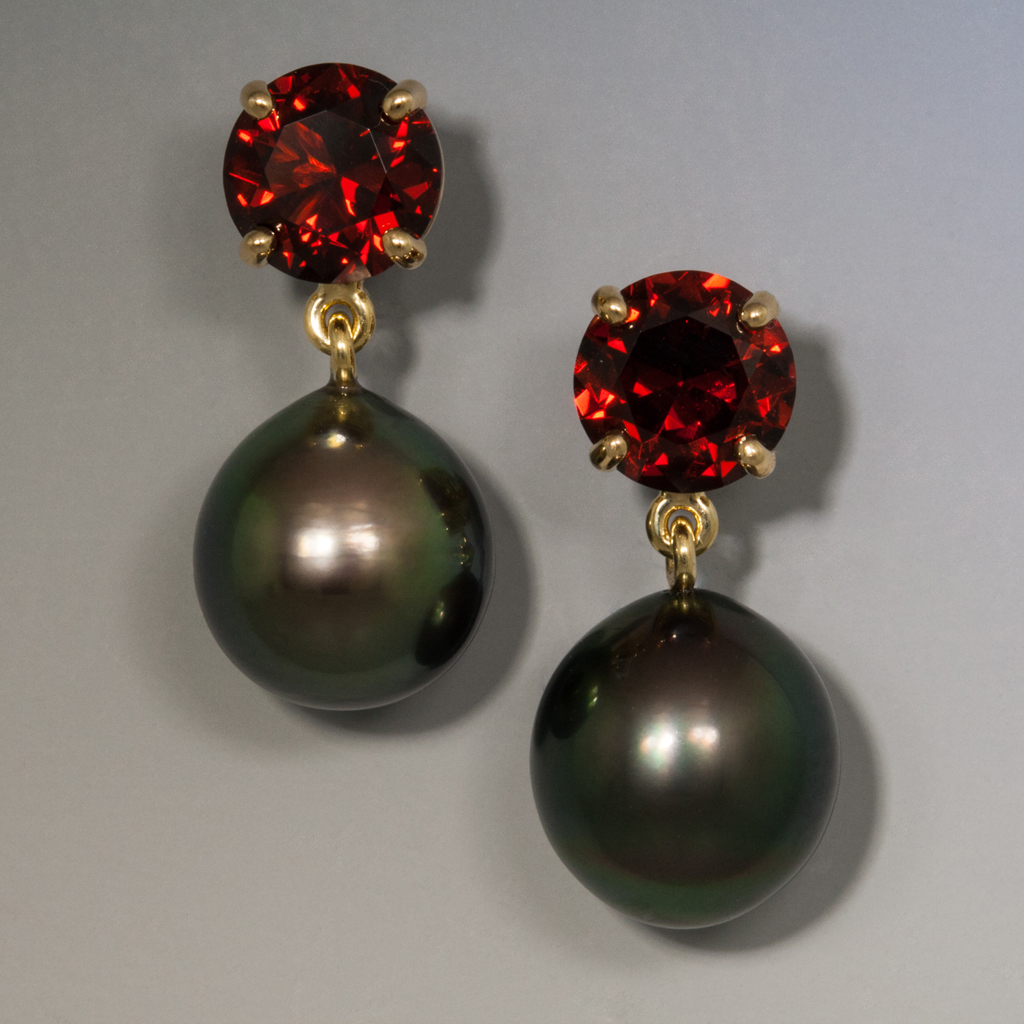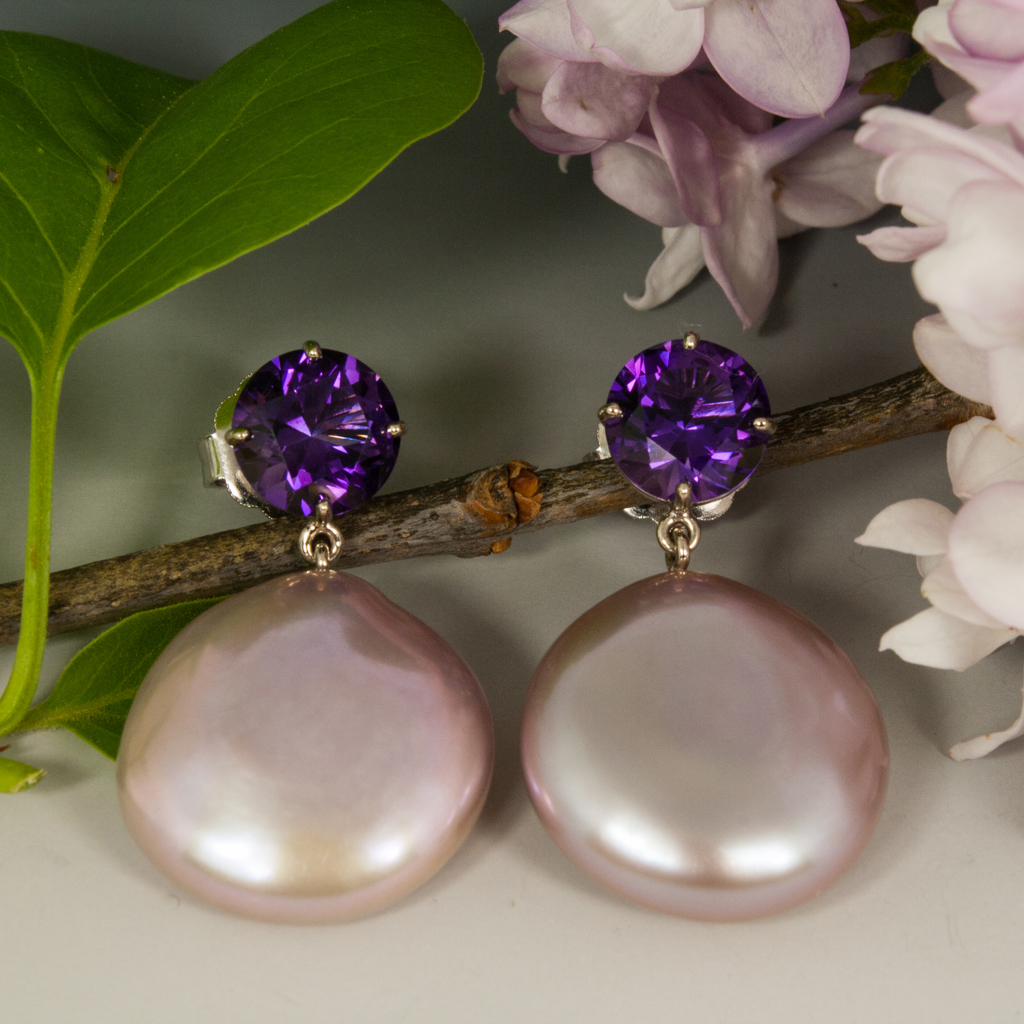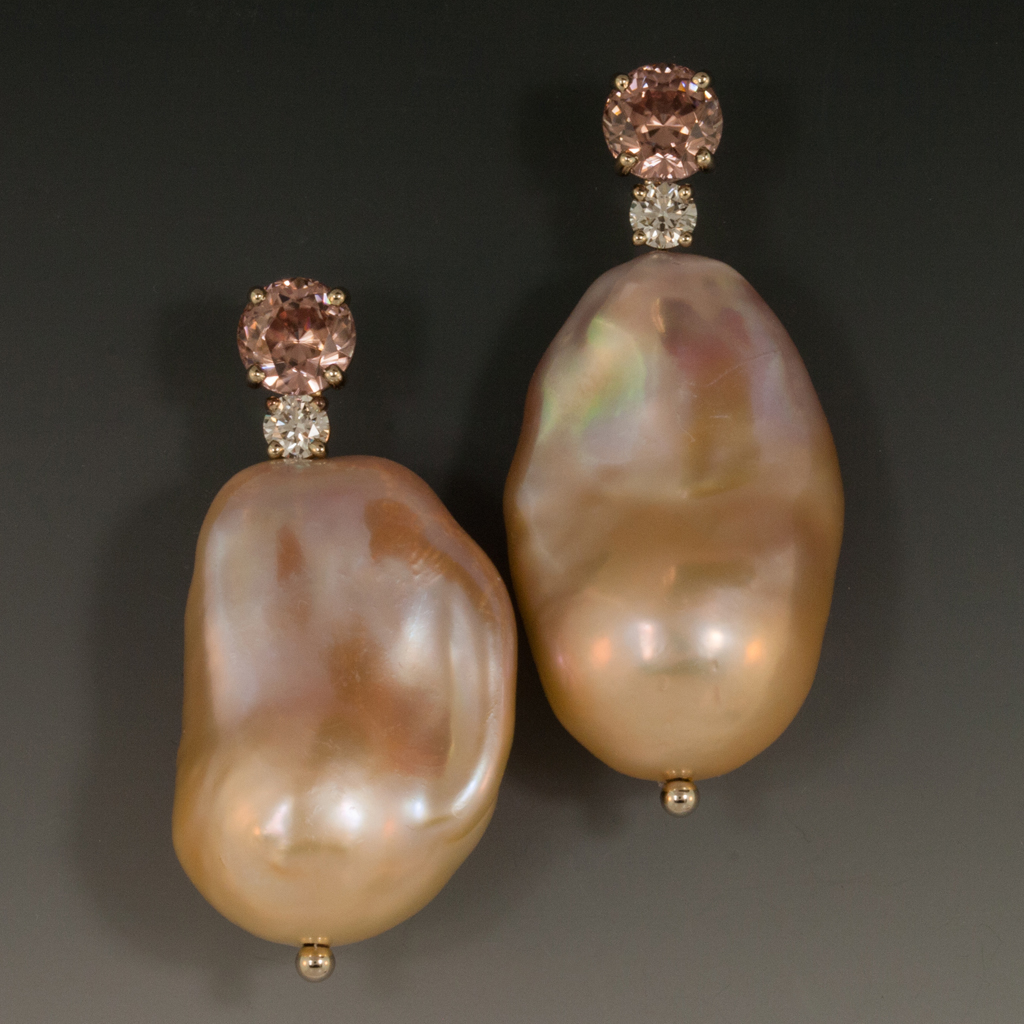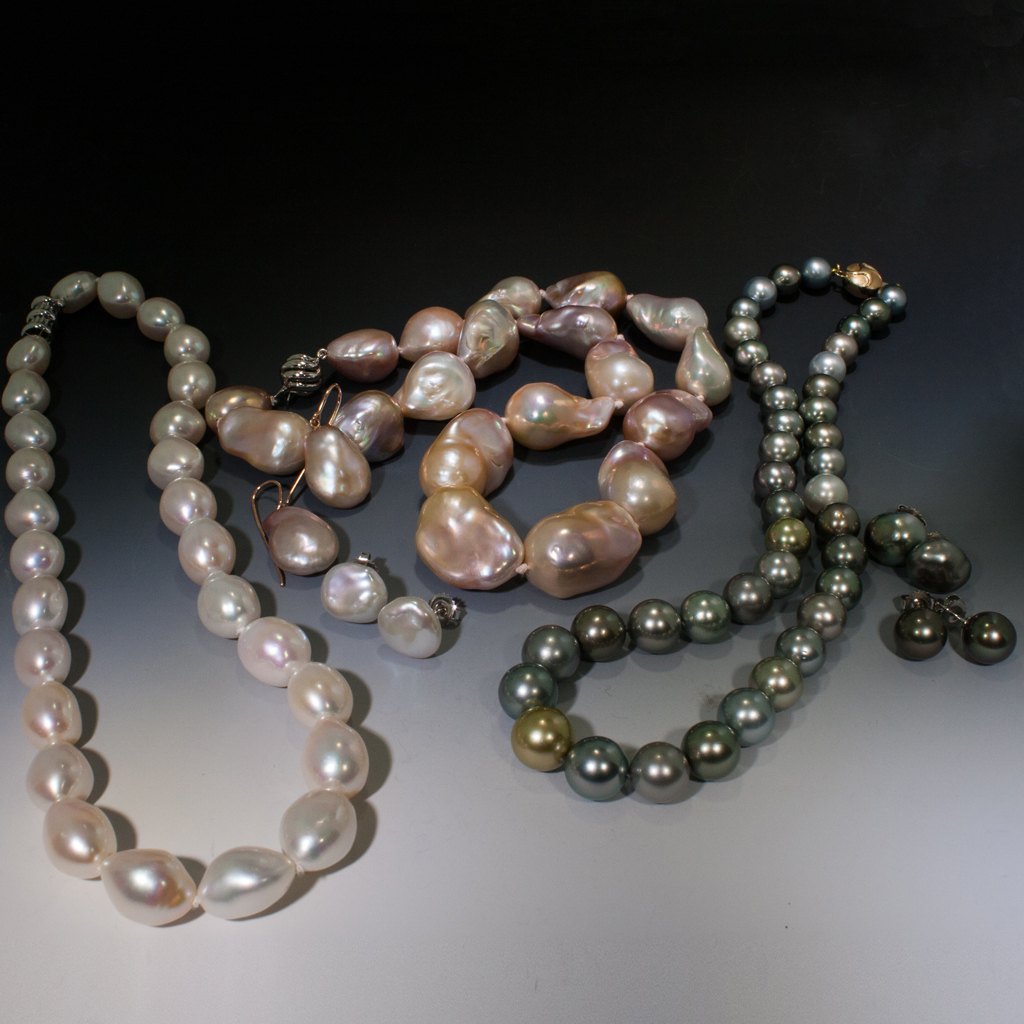
Pearl enhancers are meant to adorn your strand of pearls. They can be easily added or removed from pearls or hung on a chain, thus making them a versatile addition to your jewelry wardrobe.

Pearl enhancers are meant to adorn your strand of pearls. They can be easily added or removed from pearls or hung on a chain, thus making them a versatile addition to your jewelry wardrobe.

Tahitian pearl (black pearl) is an organic gem formed from the black lip oyster, Pinctada
These lustrous black Tahitians drop from rich colored Umba River garnets, hand made in 18K yellow gold.

Pearl – a hard, glistening object produced within the soft tissue (the mantle) of a living shelled mollusk. Its hardness is only 2.5 – 4.5 on the Moh’s scale so we don’t recommend it for an everyday ring, but earrings, pendants, necklaces, and bracelets are just wonderful to wear.
Pearls come in a wide variety of shapes, sizes, and colors. They are irridescent and can be white, pink, silver, cream, brown, green, blue, black, yellow, orange, gold, and purple.
Freshwater pearls form in various species of freshwater mussels, which live in lakes, rivers, ponds, and other bodies of fresh water.
Saltwater pearls grow within pearl oysters, which live in oceans. Saltwater pearl oysters are usually cultivated in protected lagoons or volcanic atolls. These are called Akoya pearls.
Tahitian pearl (black pearl) is an organic gem formed from the black lip oyster, Pinctada margartifera. They are primarily cultivated around the islands of French Polynesia, around Tahiti.
South Sea Pearls are produced in the Philippines, Australia, and Indonesia. It’s the largest of all pearls and ranges in size from 9 – 20 mm. They can be cream, white, or golden, and they are harvested from the oyster pinktada maxima.

Aquamarine is 7.5 – 8.0 on the Mohs Hardness scale making it an excellent jewelry gemstone. The iridescent tones of this Tahitian Black Pearl drop are nicely enhanced by the princess cut aquamarine.

Made by hand in our workshop in the Berkshires! Earrings, Large Peach Freshwater Baroque pearls drop from matched peach zircons with diamonds set in 14K white gold. The pearl drops are removable making these “Day/Night” Earrings.

A pearl is a hard glistening object produced within the soft tissue (the mantle) of a living shelled mollusk. The ideal pearl is perfectly round and smooth, but many other shapes, known as baroque pearls, can occur.
Natural Pearls occur spontaneously in the wild and are extremely rare. Cultured or farmed pearls from pearl oysters and freshwater mussels make up the majority of those currently sold.
Whether natural or cultured, gem quality perals are almost always nacreous and iridescent, like the interior of the shell that produces them.